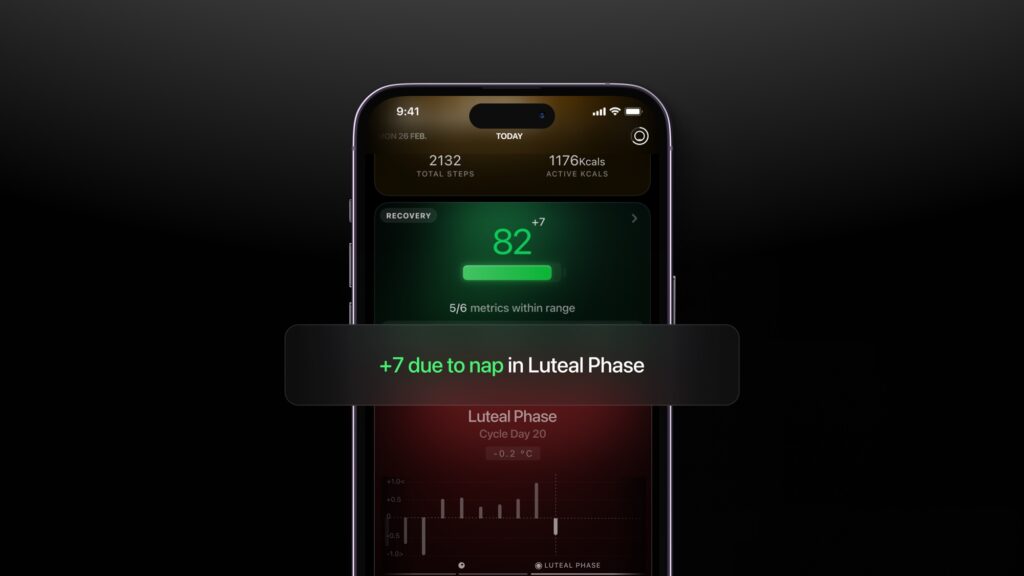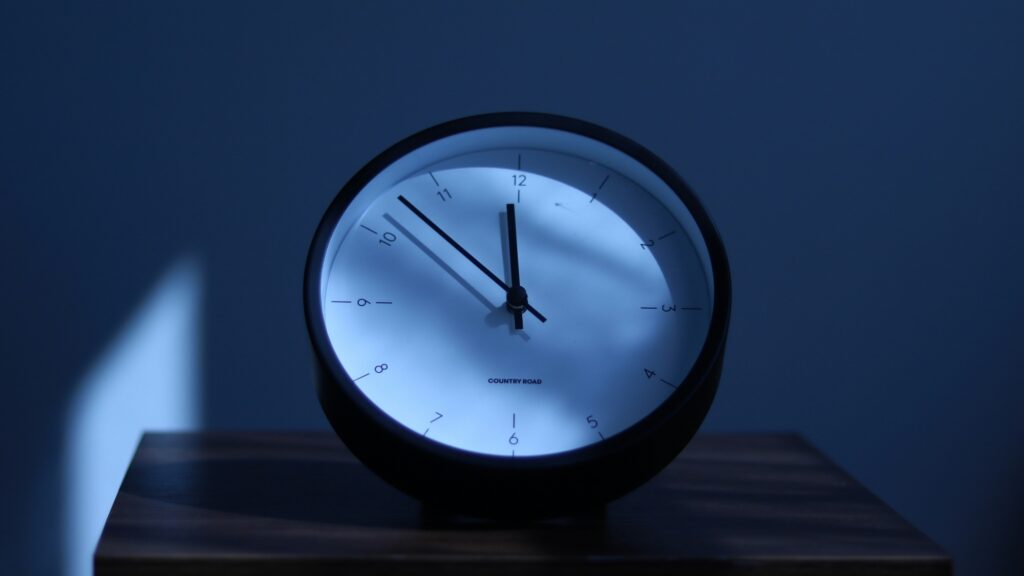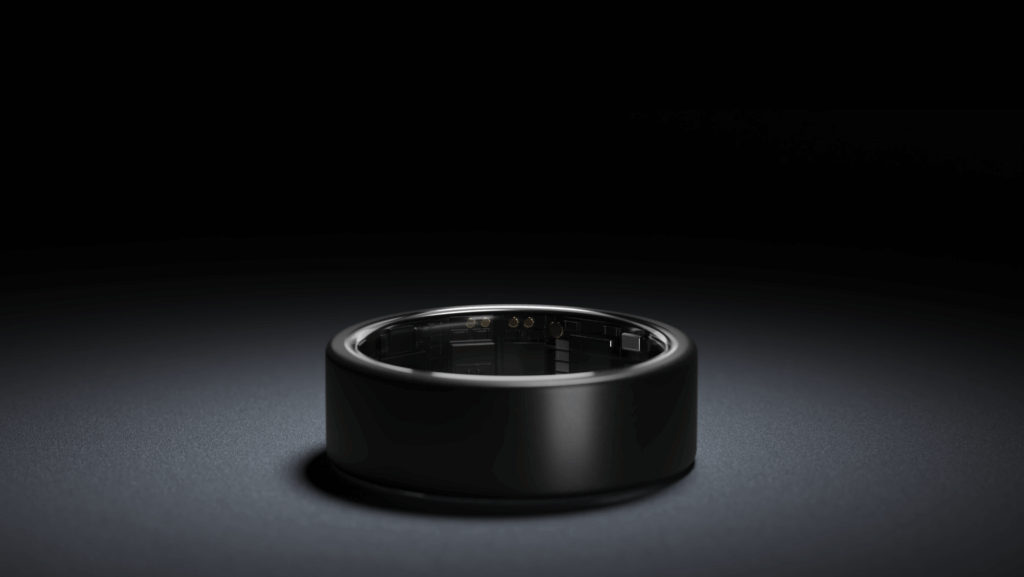Recovery isn’t constant across the menstrual cycle, and your metrics should reflect that. That’s why we’ve rolled out the Cycle Aware Recovery update, which brings deeper context to how recovery is presented across the menstrual cycle.
Adjusting recovery scores post-ovulation to seem “cycle-sensitive” hides the impact of increased body temperature. At Ultrahuman we’ve chosen accuracy over optics, offering a more honest reflection of what your body is truly experiencing.
Read on to understand this big update and the science behind it.
Read more: The four stages of the menstrual cycle
Key improvements
In the Cycle Aware Recovery update to the Ultrahuman Ring AIR, we have made the following improvements to better reflect changes across the cycle.
Note: Users will need to have the Cycle and Ovulation PowerPlug enabled to see cycle phase data.
Physiological accuracy that reflects your cycle
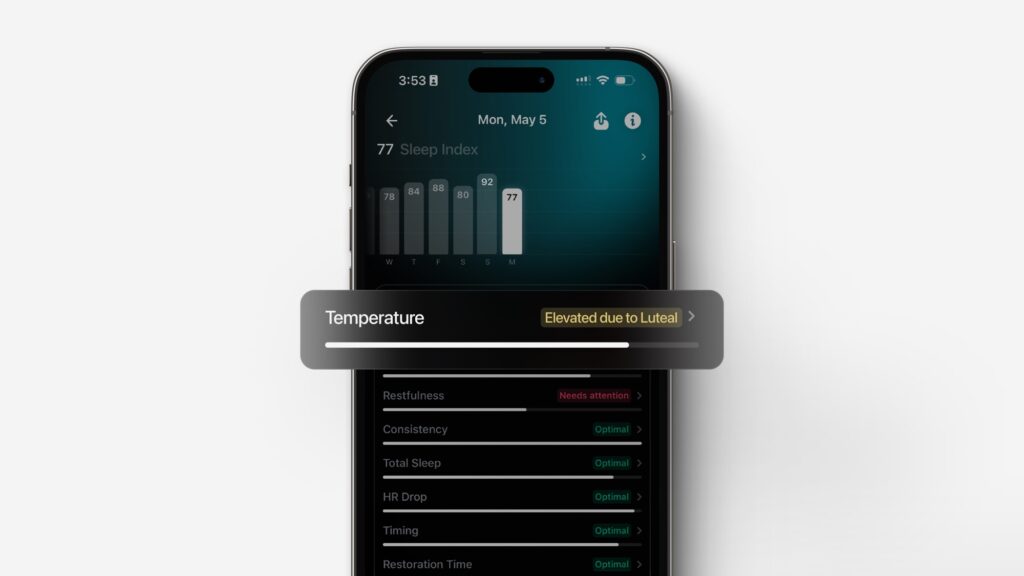
The Ring AIR is designed to track natural changes in your body with precision. During the luteal phase, subtle shifts, like a rise in body temperature, are captured and reflected in your sleep, recovery, and temperature trends metrics. The Ultrahuman Ring AIR will now distinguish a fever from a progesterone-induced temperature spike and offer you clarity about the rhythm of your body.
The science
During the luteal phase (typically 10-14 days post-ovulation), women experience biological shifts that naturally make recovery more challenging.
Your core body temperature rises by ~0.3-0.5°C due to progesterone-induced thermogenesis, which creates a warmer environment in the body, to make it easier for a fertilized egg to implant and grow.
This temperature rise is different from a fever caused by illness, but it still affects the body, causing:
- Decrease deep and REM sleep
- Elevate resting heart rate
- Decrease heart rate variability
- Increase inflammation markers
These aren’t dysfunctions, they’re natural responses in the body. By adding this context to your recovery score, it helps you understand your body.
Enhanced nap contribution
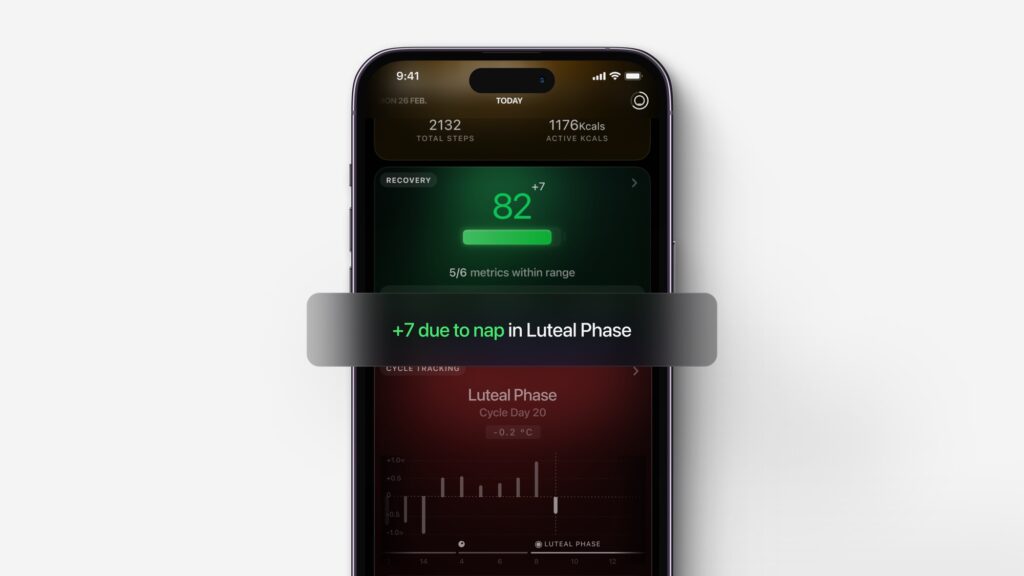
During the luteal and menstrual phases, your body experiences more systemic load: thermogenic, hormonal, and inflammatory. These factors negatively affect the quality of your sleep.
If recovery were judged only by nighttime sleep, much of the effort your body puts into restoration would go unnoticed.
Short periods of rest, like naps, can have surprisingly big benefits. That’s why we’ve updated how naps are factored into your recovery and sleep scores. You’ll notice increased credit for any naps within the luteal phase within your recovery score.
Read next: The benefit and power of naps explained
The science
According to research, sleep tends to get lighter during the luteal and menstrual phases, with noticeable drops in deep and REM stages. And that has a knock-on effect on your recovery.
Napping has been shown to improve sleepiness, alertness, mood, and some aspects of cognitive performance for up to 6 hours.
Why it matters
Recovery isn’t a one-size-fits-all process. Ultrahuman has built a system that adapts to your natural rhythms, offering insights that reflect what your body is really experiencing.
We believe clarity beats sensitivity, and our goal is to build an ecosystem that truly understands female physiology at a fundamental level.
By acknowledging the natural fluctuations in recovery across the menstrual cycle, we empower you with information that helps you make better decisions about exercise intensity, recovery needs, and overall well-being throughout your cycle.
References:
- Progesterone driven thermogenesis: https://pmc.ncbi.nlm.nih.gov/articles/PMC7575238
- Effect of different phases of menstrual cycle on HRV: https://pmc.ncbi.nlm.nih.gov/articles/PMC4625231
- Inflammation markers (CRP) across the menstrual cycle: https://sciencedirect.com/science/article/abs/pii/S1043466622000813
- Temp during luteal phase: https://www.ncbi.nlm.nih.gov/medgen/766332
- Luteal phase and heart rate variability: https://bmcwomenshealth.biomedcentral.com/articles/10.1186/s12905-024-03273-y
- Benefits of napping in the luteal phase: https://link.springer.com/article/10.1111/j.1479-8425.2010.00440.x




